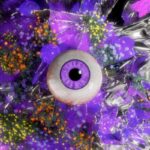The Nameless City trilogy by Faith Erin Hicks is a masterpiece of emotional storytelling, and a prime example of "show, don't tell" done right. It tells the story of a war-torn city that is a point of interest for several nations, and as a result, has been conquered -- and renamed -- so many times that the inhabitants now call it, "The Nameless City." The latest conquering has brought the Dao people to power, and many foreigners to the city. One such boy, Kaidu, is less interested in the military-like culture of the Dao, and more interested in the culture of the natives -- the Named of the Nameless City. The trilogy chronicles his journey befriending one such Named, Rat, and their desire to see the city be given not to another conqueror, but to the people who have lived in it.
Bryan Konietzko, co-creator of Avatar: The Last Airbender, gave the series accolades for allowing the reader insight into the feelings and emotions of the main characters. Much like Avatar, The Nameless City takes inspiration from Asian culture and history -- like the Silk Road and ancient Chinese architecture, making it appear similar to the Earth Kingdom. Hicks lets her world speak for itself, very rarely giving exposition and instead, letting the reader draw their own conclusions from what is shown. The world of The Nameless City is secure enough not to answer every question. While the opening of the third book hints at the city's creation, by the end of the series, it's still as much a mystery as in book one.
The character designs are also reminiscent of Avatar, with simple realistic designs and character silhouettes that make recognizing the main cast easy, even following Avatar's visual shorthand for the nations. The Dao are almost always in blue or their easily-recognizable black-and-plate-armor, the Named are usually in yellow, orange or some other earth-tone, with unique colors given to characters who don't quite fit the mold. Most notably, Mura the native soldier who sides with the Dao dresses in black, and the General of All Blades in white, symbolizing their alignments toward chaos and order respectively.
As for the main characters, Kaidu and Rat, both are extremely compelling and work nicely off of each other to tell a meaningful story. Kaidu is a Dao who'd much rather read than fight, and this often comes out in his cautious, inquisitive nature. Being new to the city, he acts as the reader's everyman, learning about the city with the reader. He has inherited his father's meek and gentle yet courageous disposition. Upon meeting Rat, he routinely snitches food for Kaidu in exchange for parkour lessons so that he can run along the rooftops as she does. At first, he does so just because he wants to learn, but his willingness to help, learn and listen gradually eat away at Rat's exterior to the point where the two could practically be inseparable.
Rat herself is a bit of an enigma. As an orphan living with the monks of the Stone Heart, she is free to go whatever she wants in the city. As a result, she is Kaidu's opposite in many ways: rash, energetic and very closed-minded when it comes to the Dao occupation of the city. That changes when she meets Kaidu, who at one key point she refers to as not a real Dao. When asked why, she replies, "Because I don't hate him." This speaks powerfully to her sordid past; the long-running resentment she has towards the city's multitude of conquerors and the freedom she longs for that's just out of reach.
In telling the story of the duo's friendship and how they change the world around them, Hicks and her colorist Jordie Bellaire absolutely outdid themselves with the visual storytelling. Many scenes are completely devoid of dialogue, with character expressions and body language telling the reader everything they need to know. And not only action scenes either -- every moment is treated with care and a sense of importance -- whether that be Rat deciding to let the General of All Blades know about an impending assassination attempt, or Kaidu getting up in the morning and trying to decide if he should cut his hair from its very Dao-like high ponytail before joining the family that is sheltering him and Rat. He sits far back as an outsider looking in before Rat finally invites him to join them in breakfast.
The story is told from an objective view as if a video camera was following the characters. We don't see their inner thoughts and, as a result, the reader is left to infer their emotions from their words and poses. The story is amazingly immersive this way, and this inference allows the reader to connect better to the characters based on their own understanding than if it had been stated outright. In the same way, many scenes are only half-told, with only a portion of the events available to the reader, who is then left to interpret and read not only between the lines but the room as well.
The trilogy walks a narrow line between hope and despair, exposing the horrors of both conquering and being conquered, while tempering that with scenes of kindness, compassion and little joys. In 2017, an animated adaptation was announced, but sadly no further news has surfaced as of yet.
About The Author

